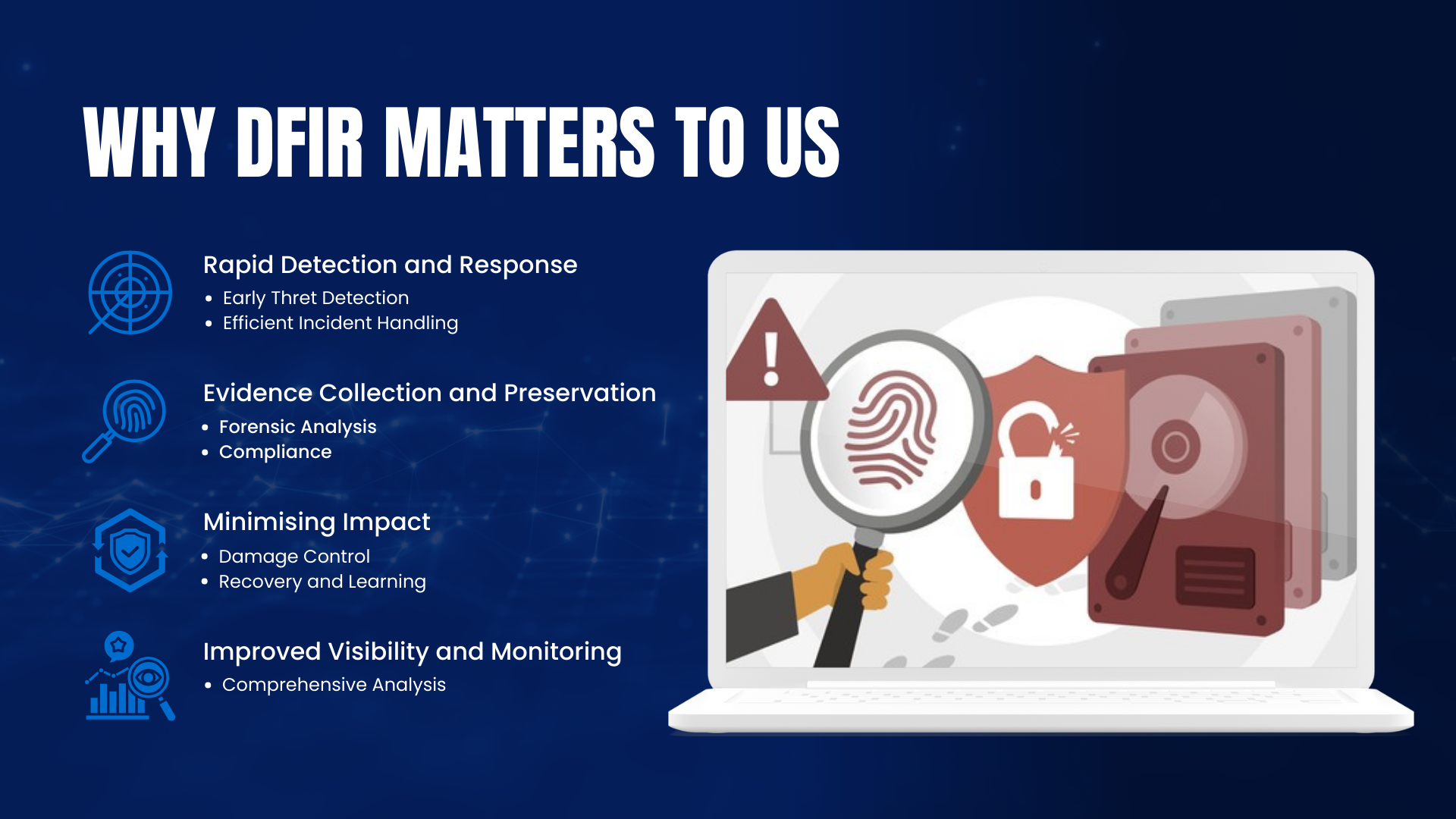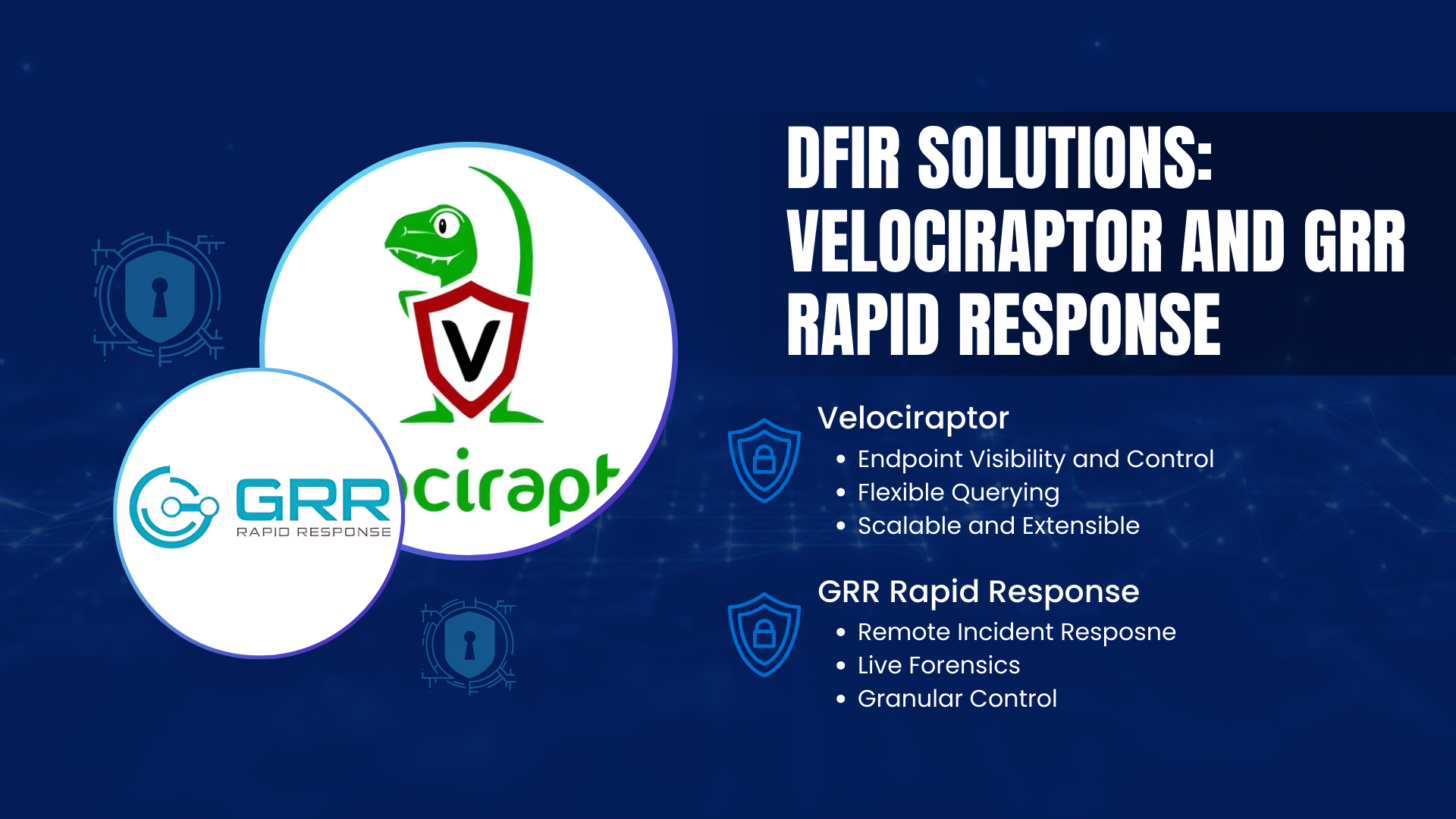Understanding DFIR
What is DFIR?
Digital Forensics and Incident Response (DFIR) refers to the combined processes of gathering and analysing digital evidence to detect, investigate, and respond to cyber incidents.
- Digital Forensics: The process of identifying, collecting, preserving, and analysing evidence from digital devices.
- Incident Response: The structured approach to managing the aftermath of a security breach or attack, with the goal of limiting damage and reducing recovery time and costs.
Why DFIR Matters to Us
- Rapid Detection and Response
- Early Threat Detection: Identifies potential threats before they can escalate into significant incidents.
- Efficient Incident Handling: Enables swift and structured response to mitigate damage.
- Evidence Collection and Preservation
- Forensic Analysis: Collects detailed evidence, ensuring it can be used to understand incidents or support legal investigations.
- Compliance: Helps meet regulatory requirements for incident reporting and evidence preservation.
- Minimising Impact
- Damage Control: Ensures that the impact of any incident is limited by taking rapid response measures.
- Recovery and Learning: Facilitates prompt system recovery and helps learn from incidents to improve defenses.
- Improved Visibility and Monitoring
- Comprehensive Analysis: Provides deep insights into endpoints and activities, ensuring comprehensive monitoring and forensic analysis.
Benefits of Implementing DFIR
- Proactive Threat Management: Identifies and responds to potential threats before they become major incidents.
- Streamlined Investigations: Enables effective evidence collection and forensic analysis.
- Operational Continuity: Minimises downtime by responding rapidly to incidents.
- Compliance Support: Ensures regulatory requirements for incident management and digital evidence are met.
- Cost Efficiency: Reduces the costs associated with long recovery times and system outages.
DFIR Solution
Velociraptor
- Endpoint Visibility and Control: Velociraptor provides deep visibility into endpoints, allowing us to hunt for indicators of compromise (IoCs) across the network.
- Flexible Querying: Utilises Velociraptor Query Language (VQL) to perform detailed investigations on endpoint activity.
- Rapid Data Collection: Gathers information quickly from multiple endpoints for analysis.
- Scalable and Extensible: Designed to scale across large environments, with community-contributed plugins and scripts to enhance capabilities.
How DFIR Works
- Detection
- Monitoring and Alerts: Detects suspicious activities and alerts the response team.
- Investigation
- Data Collection: Collects data from endpoints using Velociraptor or GRR for forensic analysis.
- Analysis: analyses the collected data to identify the root cause and understand the scope of the incident.
- Containment and Eradication
- Containment Measures: Limits the spread of an incident by isolating affected systems.
- Eradication: Removes the malicious artifacts from systems to prevent recurrence.
- Recovery
- Restoration: Restores systems to normal operation, ensuring no remnants of the threat remain.
- Lessons Learned
- Review: analyses what went wrong, what worked, and what can be improved in the incident response process.

